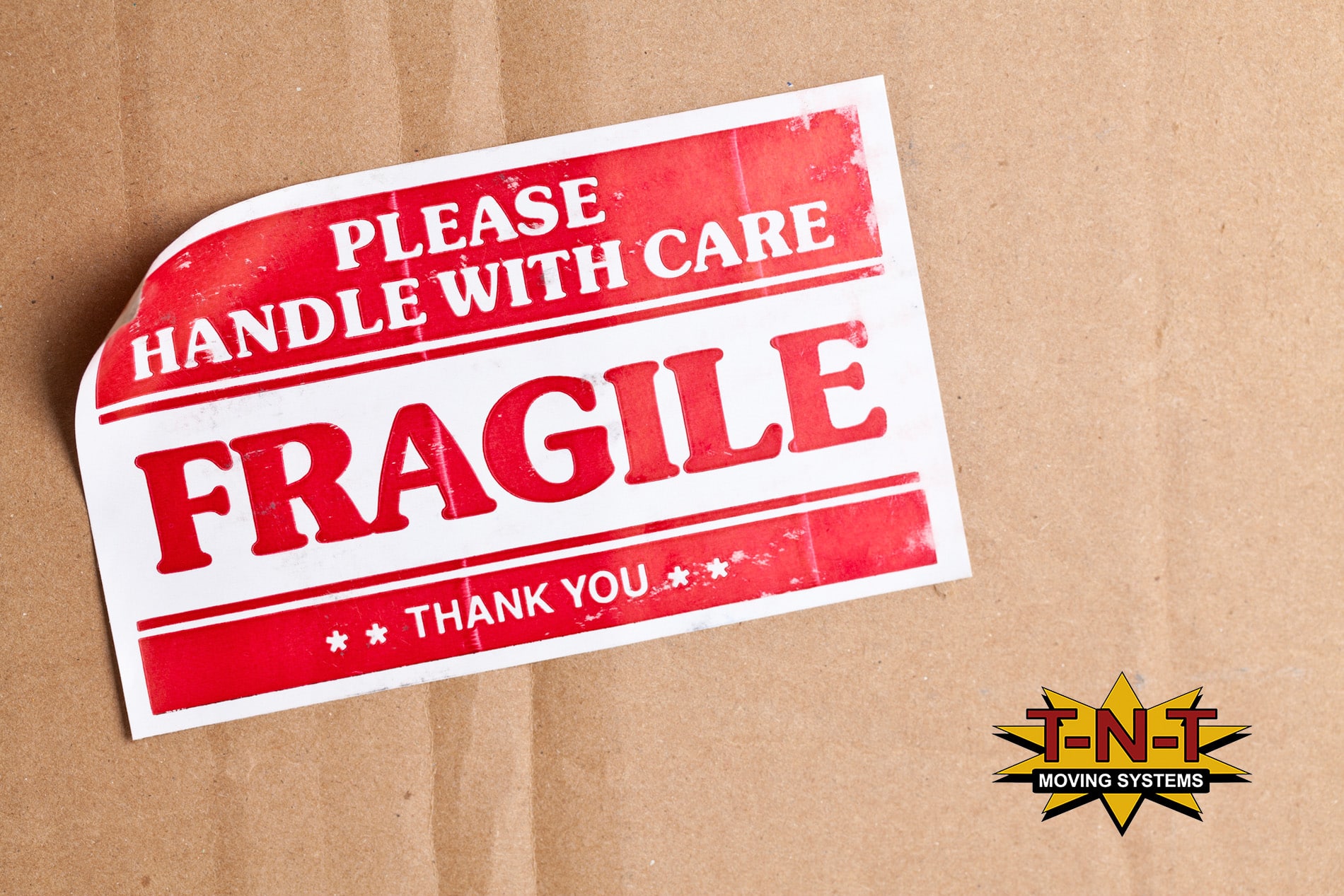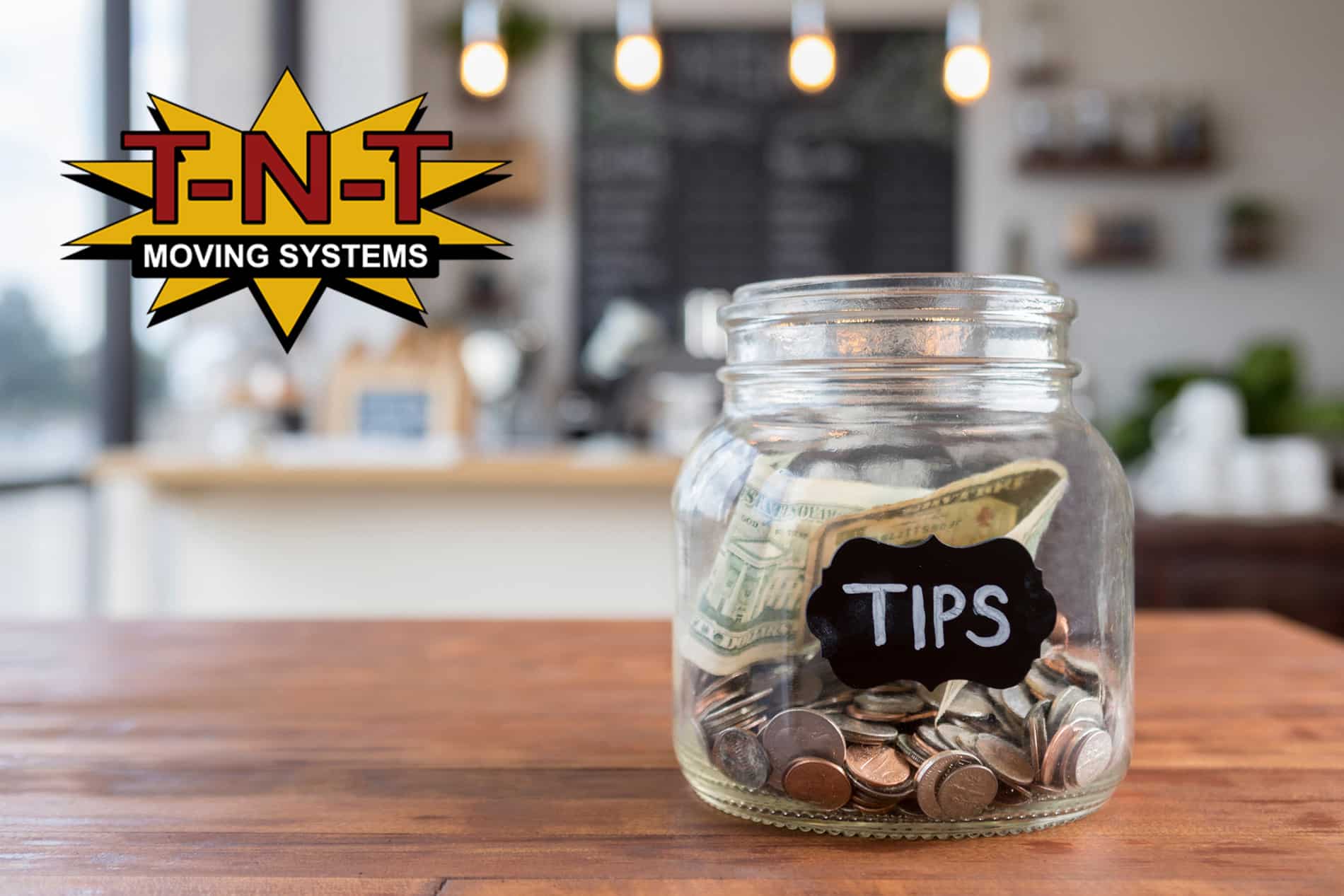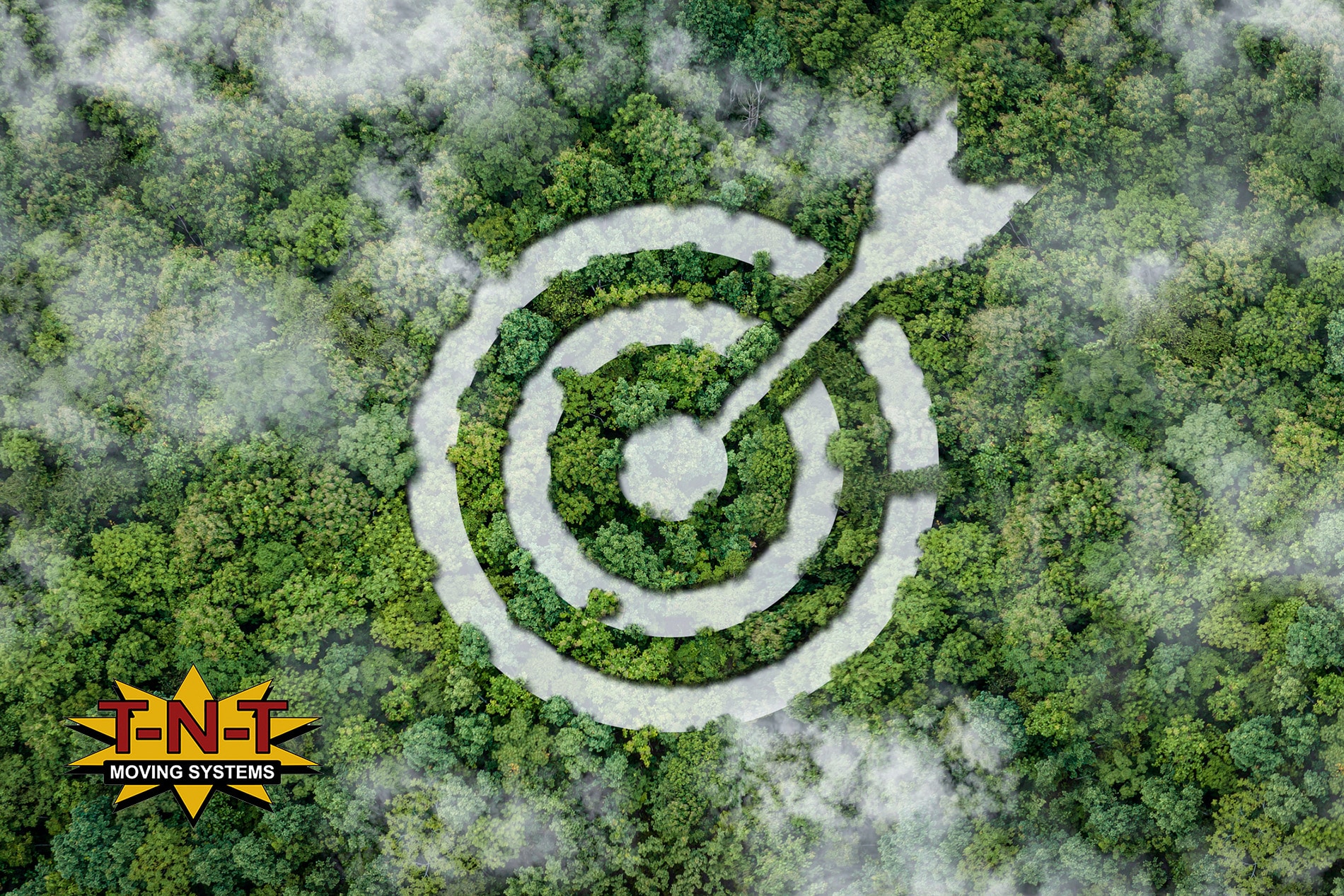Packing Up and Transporting Your Holiday Feast!
We’re counting the final days to the end of the year this December at TNT Moving Systems! The winter holidays are a busy time of year, especially for holiday travel. You may be bringing food with you for others as you visit relatives and friends, and this year more than ever, you’ll want to ensure that you can travel with food safely, securely, and free from foodborne illness. We have advice on how to get food to your destination safely, whether you travel via car or plane, short and long distances.
How to keep your food hot, fresh, and safe while traveling via car
Whether you’re traveling across the state or around the country to celebrate the holidays this year, it’s almost certain that these gatherings will be connected by the time spent together and, of course, the food shared. It’s important that you follow food safety tips when traveling to ensure that your food stays safe to eat.
1. Plan ahead: understand your travel plans, decide on your menu, and sort your food into shelf-stable items and perishable items.
If a sharp turn or a slam on the brakes will send your food flying, then maybe it’s time to save a delicate cake or soup for another year. You may want to consider items that are safe and tasty served at room temperature or cold, like pigs in a blanket, chips and dips, dinner rolls, skewers, or baked goods. Choose foods that travel well, and leave the picky perishable items to the host if traveling a long distance. Search for keywords like for potluck recipes and foods that travel well, when planning your menu.
2. Decide which items need to be prepped ahead of time, and what dishes can be prepared upon arrival.
If you’re worried about your dish not traveling well, then bring the ingredients separately and assemble them upon arrival. This is great for things like salads that might wilt in the travel time, or things you want to be assembled without becoming disarrayed like a veggie plate, cheese balls, or a charcuterie board.
3. Invest in quality coolers, thermal bags, and insulated containers.
The most important temperature range to know when it comes to handling, transporting, and storing food safely is the “Danger Zone.” The Danger Zone is temperatures between 40°F and 140°F, where bacteria can rapidly grow. Whether you’re assessing the temperature for a long drive or making a plan to put food away after dinner, keep the temperature of your dishes in check. Perishable foods like meat, poultry, and casseroles should not be kept at room temperature for longer than 2 hours. If they sit out for more than two hours, they need to be thrown out as they are susceptible to bacteria and food borne illness. The only foods that are exceptions to the danger zone are cookies, crackers, bread, and whole fruit.
To avoid the Danger Zone, keep your hot foods hot, and cold food cold with the proper equipment.
Keeping hot food hot
If you plan to travel with hot food a short distance, keep your takeout warm by transferring it to an oven-safe baking dish covered with tinfoil. Aluminum foil is your friend when it comes to short-term travel and keeping your food warm. Aluminum is cheap, widely available, effective at reflecting infrared heat, and probably already in your kitchen!
Insulated containers can also keep food hot. You’ll want to pre-heat these containers by filling them with boiled water, letting stand for a few minutes, empty it, and then putting the hot food in it. Keep the insulated container closed to keep the food hot.
On a budget:
For keeping food hot at around 140°F, you can wrap dishes, plates, and Tupperware in tinfoil first, and then wrap bath towels around the food.
Did you know…
We might think of coolers as a way to keep things cold, as it is their primary use, but coolers can also be used to keep items hot! The insulation of a cooler works to trap the heat inside of your cooler and prevent heat transfer. The best way to keep food hot in a cooler is to layer the inside of your cooler in aluminum foil, ensure your food is wrapped in aluminum foil, and then fill any empty space in the cooler with towels to work as an insulator.
Note that coolers are not made for extreme heat (over 180°F) and may cause warping or damage to the insulation if too hot. Towels on the bottom of your cooler can also prevent damage to the cooler. You can pre-heat your cooler with warm water 30 minutes before packing your cooler, then draining the water and begin to pack your food.
Anything from a Styrofoam cooler to a Yeti will work fine to keep your food warm.
Keeping cold food cold
Cooler options
There are so many options for coolers in the market right now, with varying claims of how long they keep ice from melting. These claims can definitely depend on the coolers being tested in perfect conditions, the number of times the cooler is opened, as well as down to how the cooler is packed, and what type of ice is used. From cheapest to most expensive, here are the rough estimates of how efficient coolers are at maintaining their cold.
Ice in a Styrofoam cooler ($10-$20) can last up to 18-24 hours
Ice a in Coleman cooler ($30-$50) can last up to 24 hours – 2 days.
Ice in a Coleman Steel cooler ($95-$125) can last up to 4 to 5 days
Ice in a Pelican elite cooler ($195 – $220) can last up to 5 to 10 days
Ice in an RTIC cooler ($149-$239) can last up to 7 to 10 days.
Ice in a Yeti Tundra 45 ($300-$329) cooler can last up to 7 to 10 days.
On a budget:
Keep food cool (40°F or lower) by placing it in a cooler with ice or freezer packs. If you don’t have an icemaker, used water bottles filled and frozen ahead of time make great DIY ice packs.
4. Pack coolers and bags the day of travel with our pre-packing tips:
Prep your cooler by cooling it down before packing it. You can do this by putting ice or ice packs in the cooler a few hours before use to pre-chill your cooler.
Keep snacks for during travel at the top of your coolers for easy access, or in smaller cooling bags in the car.
Pack drinks in a separate cooler from the food cooler, as you want to avoid opening the food cooler as much as possible to keep it cold.
Be prepared to stop for ice to replenish the food cooler and maintain the temperature.
Don’t drain the water; melted water actually helps to keep the ice that’s left insulated and if it’s all drained, then it allows more warm air to get between the cubes when the cooler is opened.
If a cooler is only partially filled with food or drinks, pack the remainder of the cooler with ice; a full cooler will maintain its cold temperatures longer than one that is partially filled since it reduces airflow.
Separate raw meat and poultry from cooked foods or foods meant to be eaten raw like veggies and fruits.
Make your ice last longer with an ice and salt combination. You can add salt to the ice as you put it in the cooler, so that it lowers the freezing temperature of water, making the ice colder and last longer.
5. Ensure the car is temperature controlled, even during stops.
Keep the air conditioning running, and avoid sunny spots when parking for keeping foods cool. If stopping at a hotel or Air BNB overnight, bring canned food inside. Canned foods that have been exposed to freezing and thawing temperatures should be discarded. If traveling overnight to a warmer location, bring your cooler inside as well.
6. Store food upon arrival.
As soon as you arrive at your destination, you’ll want to place cold foods in the refrigerator immediately, and hot foods in an oven with an internal temperature of 140°F. We recommend using a food thermometer to ensure the food stays at a safe internal temperature.
Traveling by plane: What foods can you bring onto a plane?
There are few limits on what food you can bring onto a plane. Obviously, you’ll want to avoid food in your checked bag that can’t properly be secured or is prone to be squished – no one is going to be gentle with your checked bag! Also keep in mind that food in your checked bag will not be subject to temperature control, and may face extreme high or low temperatures.
Coolers are approved as a carry-on (if they meet the carry-on size) as are coolers for a checked bag, as long as it’s securely closed with a luggage strap and bungee cords. As we’ll note later, the ice in a cooler must be completely frozen when going through security. Wheeled coolers are going to be your best friend when lugging around your belongings through a busy holiday airport.
If you’re packing food in your carry on, you’ll also want to organize your carry-on bag so that you can easily and quickly remove foods for separate screening. Foods and powders can clutter bags and obstruct images on the x-ray machine.
The TSA notes the following on meat, seafood, and other non-liquid items:
“Meat, seafood and other non-liquid food items are permitted in both carry-on and checked bags. If the food is packed with ice or ice packs in a cooler or other containers, the ice or ice packs must be completely frozen when brought through screening. If the ice or ice packs are partially melted and have any liquid at the bottom of the container, they will not be permitted. You also can pack frozen perishables in your carry-on or checked bags in dry ice. The FAA limits you to five pounds of dry ice that is properly packaged (the package is vented) and marked.”
Here are foods approved for carry on and checked bags.
Bottled water (less than 3.4oz in a checked bag)
Bread
Candy
Canned food (in a checked bag, may be considered a liquid and too large of a quantity)
Cereal
Cheese (limit on soft and cream cheese, less than 3.4oz in carry on bags)
Solid chocolate
Coffee (grounds or beans)
Cooked meat, seafood, and vegetables (ensure that they can fit in the overhead bin or underneath the seat)
Cookies
Crackers
Dips and spreads (less than 3.4oz in a carry on bag)
Dried fruits
Fresh eggs
Fresh fruits and vegetables
Fresh meat and seafood
Frozen food
Gravy (less than 3.4oz in a carry on bag)
Honey (less than 3.4oz in a carry on bag)
Hummus (less than 3.4oz in a carry on bag)
Ice cream (less than 3.4oz in a carry on bag)
Jam (less than 3.4oz in a carry on bag)
Live lobster(in a special clear, sealed, spill-proof container)
Salsa, sauces, and syrup (less than 3.4oz in a carry on bag)
Nuts
Oils and vinegars (less than 3.4oz in a carry on bag)
Peanut butter (less than 3.4oz in a carry on bag)
Pies and cakes
Pizza
Salad dressing (less than 3.4oz in a carry on bag)
Salt
Sandwiches
Soup (less than 3.4oz in a carry on bag)
Spices (less than 3.4oz in a carry on bag)
Yogurt (less than 3.4oz in a carry on bag)
Baby food on a plane:
Baby food is allowed in both your carry-on bags and checked bags. Bag your baby food separately as you will want to easily remove baby food from your carry-on bag to be screened separately from the rest of your belongings.
Baby formula, on the other hand, is permitted with special instructions in carry-on bags, and always in checked bags. Formula, breast milk, and juice are allowed in reasonable quantities in carry-on bags, and as with baby food, will need to be removed from your carry-on bag to be screened separately.
Pet food
Solid pet food is allowed in carry-on bags and checked foods. Dry or moist pet food is considered solid pet food. Wet pet food is considered as part of the 3-1-1 liquids rule for carry-on bags and must be less than 3.4oz. in the carry on bags.
What foods are banned by TSA?
With the 3:1:1 liquids rule, it can sometimes be tough trying to figure out what’s actually allowed to carry on versus what needs to be checked. Basically in your carry-on bag, you must follow the requirements of the 3-1-1 rule. You can carry up to 3.4 ounce bottles (3) as long as they are all contained in one quart zip-top bag (1) and are carried by one passenger (1).
No particular food is banned from flights, but you’ll have the most trouble getting canned foods, partially melted ice packs, and alcoholic beverages transported in carry-on luggage.
Booze over 140 proof or 70 percent ABV cannot be brought on a plane. If the alcohol you want to bring is less than 70% ABV, then you can pack up to 5 liters (less than 3.4 oz/100 ml allowed) in your checked bag. The bottles in your checked bag must be in unopened retail packaging. If the alcoholic beverage is less than 24%, then it is not subject to limitations. Mini bottles of alcohol can be brought on-board if they can fit into a single quart-sized bag.
Happy Holidays from TNT Moving Systems!
At TNT Moving Systems, we wish you a wonderful holiday season! May all your travels be safe, your food kept secure and well packed, and your time well spent with family and friends. We look forward to moving with you into 2021!




